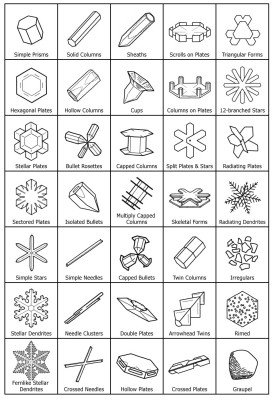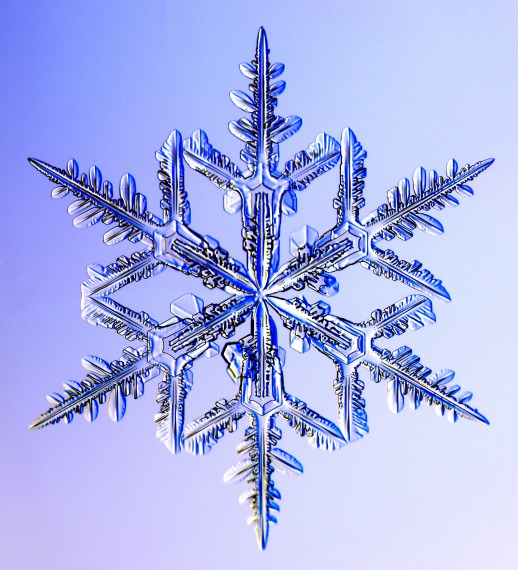Elegant and Edifying Snow
January 10, 2011
SNOWFLAKES are ice crystals that form around dust particles or other microscopic matter in the upper atmosphere. A typical snowflake is a conglomeration of crystals, most damaged as they fall from the heights. A hundred years ago, the science of snow was still in its infancy. Since then, the systematic study of snow has advanced rapidly with greater understanding of its properties and classification of crystals and snow packs. The measurement and management of snow are both consuming issues. Though snow is now the stuff of formal expertise, and probably makes for some tedious dissertations for the general reader, who could ever find the subject dull?
Ken Libbrecht is chairman of the physics department at California Institute of Technology and the creator of one of the more interesting natural history sites on the Internet. SnowCrystals.com presents the science of snow with an appreciation for the beauty of its subject matter. I highly recommend it.
“I feel that with over six billion people on the planet, surely a few of us can be spared to ponder the subtle mysteries of snowflakes,” writes Libbrecht, who is the author of The Secret Life of a Snowflake and other books. His website is an excellent source for homeschoolers. He offers a short summary of the major scientific discoveries, starting with Johannes Kepler. He writes:
In 1611 Johannes Kepler published a short treatise On the Six-Cornered Snowflake, [1] which was the first scientific reference to snow crystals. Kepler pondered the question of why snow crystals always exhibit a six-fold symmetry. Although he doesn’t refer to the atomistic viewpoint, Kepler does speculate that the hexagonal close-packing of spheres may have something to do with the morphology of snow crystals. Kepler was astute in recognizing that the genesis of crystalline symmetry was an interesting scientific question, and he also realized that he did not have the means to answer it. It would be 300 years before Kepler’s question could finally be answered, requiring the development of X-ray crystallography.
Below is Libbrecht’s chart of the most common types of snow crystals:


